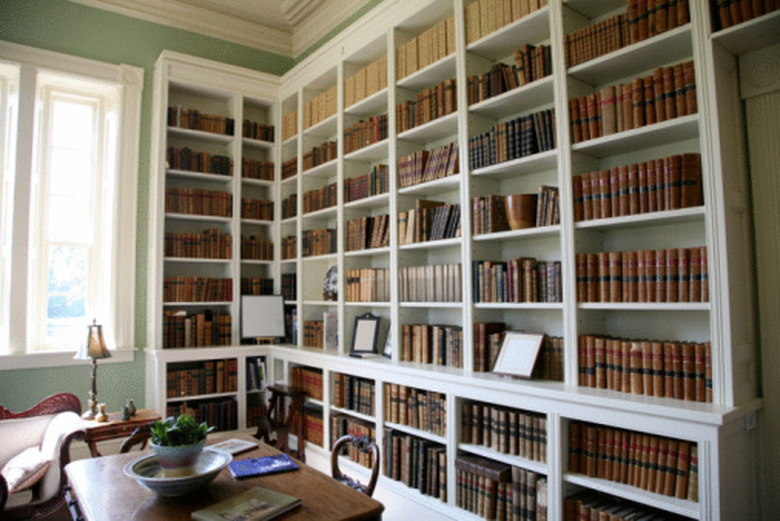How To Measure Shelves
Things Needed
-
Tape measure
-
Pen and paper
-
Masking or painter's tape
Tip
Shelving is a wise way to add additional storage to your home. Many open shelving units have decorative brackets. Consider the bracket sizes when determining what size shelves are necessary and the space needed to store your items.
Before you purchase or build shelves for your home, be sure to measure the area in which you want to place them. Shelving can provide additional storage areas in a basement or garage, increase vertical space in closets or cabinets, create an area to store books or other objects or add a decorative space to display decor. It is not difficult to determine the size of shelving necessary to make use of the vertical space.
Step 1
Look at the space where you want to place the shelving. Determine whether you want to add individual wall-hung shelves, multiple shelves for a bookcase or decorative feature or enclosed shelving, such as in a cabinet, piece of furniture or closet. If the room already seems too busy and cluttered, consider hidden shelving inside a piece of furniture or adding a storage cabinet.
Step 2
Stretch your tape measure across the area where you want to install the shelf. For instance, you may want to install wall-to-wall shelving or use a decorative shelf that is only a foot in length. Once you determine the length of the shelf, place a piece of painter's or masking tape of the same length on the wall.
Step 3
Step back in order to view the tape. Check to make sure the shelving length is right for the room and does not get lost on a large wall or appear too large for the room size. Write down the length once you determine what looks right for the room area.
Step 4
Use the tape measure to determine how much space you want in between the shelves. For instance, the shelves may hold only books that are approximately the same height, or decorative items of varying heights. Measure the tallest item and write this measurement down. If you want multiple shelves, you can choose to space them evenly or to make some of the spaces narrow and others wider. Add a couple of inches to the height of your tallest item to allow for clearance.
Step 5
Measure the depth of the shelf by determining the size of the items you want to display. The shelves should extend at least an inch beyond the depth of the item on the shelf. This is particularly important when measuring for closed shelves that have a door. Another reason measuring depth is important is because you don't want someone entering the room to accidentally run into the shelf when turning the corner. Write down this measurement as well and take it with you to the store.
